Require Is Not Defined
When working with JavaScript, especially in Node.js or in the browser, you may come across an error that says “require is not defined.” This error occurs when the JavaScript runtime cannot find the “require” function, which is used to import modules or external libraries.
In Node.js, the “require” function is built-in and allows you to load modules or dependencies into your code. It is a core part of the CommonJS module system, which is used by Node.js to organize and share code across different files. By using the “require” function, you can access functionality defined in other files or installed packages.
On the other hand, in the browser, the “require” function is not natively available. Browsers do not have built-in support for the CommonJS module system, so they cannot directly understand or use the “require” function. Instead, browsers use a different module system called ES modules, which use the “import” and “export” keywords to import and export functionality between files.
Common causes of “require is not defined” error:
1. Node.js environment not set up properly:
If you encounter the “require is not defined” error in Node.js, it could be due to an issue with your Node.js environment. Make sure you have installed Node.js correctly and that you are running your code within a Node.js environment. Additionally, verify that you are using the correct version of Node.js that supports the “require” function.
2. Missing module:
Another common cause of the error is when you try to require a module that is not installed or is missing from your project. Double-check if you have installed all the necessary modules and if their names and paths are correct.
3. Incorrect path or file name:
Check if the path or file name you are providing to the “require” function is correct. Ensure that the capitalization, spelling, and file extension are accurate.
Resolving “require is not defined” error in Node.js:
1. Installing missing modules:
If the error is occurring because a required module is missing, you need to install it. You can use the Node Package Manager (NPM) or Yarn to install the missing module. Open your command line interface, navigate to your project directory, and run the command `npm install
2. Checking file path and name:
If the error is caused by an incorrect file path or name, ensure that the path and file name are correct. Verify the capitalization, spelling, and file extension. If the file is in a different directory, provide the correct relative or absolute path when using the “require” function.
Resolving “require is not defined” error in the browser:
Since the “require” function is not natively available in the browser, you need to use a module bundler or a transpiler like Babel along with a module bundler like Webpack or Rollup to handle module imports.
1. Setting up a module bundler:
To use the “require” function in the browser, you can set up a module bundler like Webpack or Rollup. These tools will bundle your JavaScript code and its dependencies into a single file that can be understood by the browser. They convert the “require” syntax into the compatible format used by the browser.
2. Configuring the module bundler:
After setting up the module bundler, you need to configure it to handle the “require” function. In Webpack, for example, you can use the “webpack.config.js” file to define how your code will be bundled. Ensure that the bundler recognizes the “require” keyword and transforms it accordingly.
Using module bundlers to handle “require is not defined” error:
Module bundlers like Webpack and Rollup can handle the “require is not defined” error by bundling your code and its dependencies into a format understood by the browser.
By configuring the module bundler, you can specify how the “require” function should be handled. The bundler will convert the “require” syntax into the format supported by the browser’s module system.
It’s worth noting that using a module bundler requires additional setup and configuration, but it provides the advantage of managing dependencies and optimizing your code for performance.
Best practices to prevent “require is not defined” error in JavaScript applications:
1. Use the appropriate module system:
Depending on your environment, use the appropriate module system. Use the CommonJS module system with the “require” function in Node.js, and use ES modules with the “import” and “export” keywords in the browser.
2. Install and manage dependencies correctly:
Ensure that all required dependencies are installed correctly using package managers like NPM or Yarn. Double-check the package names and versions in your project’s package.json file.
3. Check path and file names:
Verify that the paths and file names you provide to the “require” function are correct, paying attention to the capitalization, spelling, and file extension.
4. Use module bundlers or transpilers:
If you are working in the browser environment, consider using a module bundler like Webpack or Rollup, along with a transpiler like Babel, to handle module imports and convert code to a format that browsers can understand.
5. Keep your tooling up to date:
Regularly update your development tools, including Node.js, NPM, browsers, and module bundlers, to take advantage of the latest features and bug fixes.
FAQs:
Q: What is the difference between “require” and “import”?
A: “Require” is used in the CommonJS module system, primarily in Node.js, to import modules or dependencies. On the other hand, “import” is used in the ES module system, which is the standard for importing and exporting modules in modern browsers. While “require” is used with a function syntax, “import” is used with a keyword syntax.
Q: Can I use “require” in the browser?
A: No, the “require” function is not natively available in the browser as it relies on the CommonJS module system. To use “require” in the browser, you need to use a module bundler like Webpack or Rollup, which can handle the “require” syntax and convert it into a format understood by the browser.
Q: How do I use “require” in React?
A: React applications can use the “require” function when bundled with tools like Webpack or Rollup. Configure your module bundler to handle the “require” keyword, and it will transform it into the proper format for the browser environment.
Q: What should I do if I get a “Require is not defined” error in an ES module scope?
A: In an ES module scope, you should use the “import” and “export” keywords instead of “require.” The “import” keyword allows you to import functionality from other modules, while the “export” keyword enables you to export functionality from the current module.
Q: How can I use “require” in TypeScript?
A: When using TypeScript, you can use the “import” statement instead of “require” to import modules. TypeScript is compatible with ES modules, and the “import” syntax provides better type checking and static analysis compared to “require.”
Q: What if I encounter “Require is not defined” in Vue.js?
A: Vue.js, being a frontend framework, relies on the browser’s module system. Ensure you have set up a module bundler like Webpack, and configure it to handle the “require” syntax. Additionally, consider using the “import” syntax instead of “require.”
Q: What does the error “Cannot use import statement outside a module” mean?
A: This error is encountered when using the “import” statement in an environment that does not support the ES module system. It typically occurs when trying to use the “import” statement in a Node.js script without proper module system configuration or when running the code directly in a browser without bundling it with a module bundler.
How To Solve Require Is Not Defined In Electronjs
What Is Require Not Defined In Javascript?
JavaScript is a versatile programming language that runs on the client side as well as the server side. It allows developers to create interactive elements on websites, build complex web applications, and even develop mobile applications. To enhance the functionality and efficiency of JavaScript, a wide range of libraries and frameworks have been developed by the community, such as Node.js and React.
One of the most common errors encountered by JavaScript developers is the “require not defined” error. This error typically occurs when using modules or libraries that require the use of the “require” function, but this function is not recognized or defined by the JavaScript runtime environment. In simpler terms, the “require not defined” error usually arises when the code is executed in a browser environment, where the “require” function is not available out of the box.
The “require” function is a part of CommonJS, a standardized module system for JavaScript, which enables the use of modules to organize code and share dependencies easily. Node.js is a popular runtime environment built on JavaScript that natively supports the CommonJS module system and recognizes the “require” function. Therefore, the “require” function can be used without any issues within Node.js.
However, when JavaScript code that relies on the “require” function is executed within a browser environment, such as a regular webpage, the error “require not defined” occurs. This is because, unlike Node.js, most browsers do not natively support the CommonJS module system. Instead, browsers use different mechanisms for handling modules, such as the ES6 module system (import/export statements) or AMD (Asynchronous Module Definition).
To resolve the “require not defined” error in the browser, developers need to use a module bundler such as Webpack, Browserify, or Rollup. These module bundlers convert the code that relies on the “require” function into a format that the browser can understand. These bundlers analyze the codebase, traverse the dependency tree, and bundle all the required modules into a single file.
Using a module bundler, developers can embrace the concept of modularization in their JavaScript code and still be able to run it in browsers without encountering the “require not defined” error. The bundlers provide ways to write code using the “require” function and handle all the module resolution and dependency management automatically.
Frequently Asked Questions (FAQs):
Q: Can I use the “require” function in regular JavaScript code without a bundler?
A: No, the “require” function is not natively recognized by regular JavaScript in a browser environment. You would need to use a module bundler like Webpack or Browserify to utilize the “require” function successfully.
Q: Why do I get the “require not defined” error when importing a library that uses the “require” function?
A: Libraries or modules that rely on the “require” function are typically written to be used in a Node.js environment. When you try to use these libraries directly in a browser, the “require not defined” error occurs because the browser does not understand the “require” function out of the box.
Q: How do module bundlers resolve the “require not defined” error?
A: Module bundlers, such as Webpack and Browserify, analyze your codebase, identify the modules used with “require,” and bundle them into a single file that can be understood by the browser. This process ensures that the “require” function is properly resolved and executed in a browser environment.
Q: Are there alternatives to using the “require” function in browser JavaScript?
A: Yes, instead of using the “require” function, you can opt for other module systems that are natively supported by browsers, such as the ES6 module system (import/export statements). However, keep in mind that these alternatives might require additional configuration or polyfills to work seamlessly across various browsers.
In conclusion, the “require not defined” error is a common hurdle faced by JavaScript developers when trying to use the “require” function in a browser environment. To overcome this error, developers need to make use of module bundlers like Webpack that can analyze dependencies and bundle the code accordingly, making it compatible with the browser environment. Embracing modularization in JavaScript code is essential for creating efficient and maintainable applications, and understanding the nuances of module systems and bundlers helps ensure smooth execution across different platforms.
Why Is Require Not Working In Js?
JavaScript is an incredibly versatile programming language that is widely used for both front-end and back-end development. One of the key features of JavaScript is its ability to import and use external modules, which can provide additional functionality and help organize code. The most common way to import modules in JavaScript is by using the `require` keyword. However, there are occasions when developers encounter issues with the `require` function, and it does not work as expected. In this article, we will explore the potential reasons behind this problem and discuss possible solutions.
Understanding `require` in JavaScript
Before delving into the reasons why `require` might not work, let’s first understand what it does. In JavaScript, `require` is a special function that is used to load and use modules that have been exported from separate files. It is mainly used in environments that support CommonJS modules, such as Node.js. The `require` function takes the path to the module file as its argument and returns the exported module.
Potential Reasons for `require` Not Working
1. Incorrect File Path: One of the most common reasons for `require` not working is specifying an incorrect file path. When using `require`, it’s essential to provide the correct path to the module file. This includes ensuring correct file extensions, such as “.js” for JavaScript files. Carefully double-checking the file path can resolve this issue.
2. Module Not Installed: Another possible reason is that the required module is not installed or not available. When using external modules, it is necessary to have them installed using a package manager like npm (Node Package Manager) or yarn. If the module is missing, `require` will not be able to load it, resulting in an error. Ensure that all the required modules are properly installed and available.
3. Path Configuration: In certain cases, `require` issues may arise due to incorrect path configuration. By default, Node.js looks for modules in the `node_modules` folder. However, if you have a different module structure or use a bundler like Webpack, the path configuration may need adjustment. Verify the path configuration to ensure that `require` is searching for modules in the correct locations.
4. Syntax Errors: Syntax errors in the module file itself can also cause `require` to fail. Ensure that the required module file is free of syntax errors such as missing parentheses, semicolons, or incorrect function calls. JavaScript is a dynamically typed language, so even a small error in the module file can prevent it from properly exporting, making it unusable with `require`.
5. Asynchronous Execution: JavaScript is primarily an asynchronous language, meaning that it does not block the execution of code. However, `require` is synchronous by nature. If `require` is used in an asynchronous function, it may not work as expected. To resolve this issue, consider using alternatives like `import` or utilizing callbacks or promises to ensure proper module loading and execution.
Solutions to `require` Issues
1. Verify the file path provided to `require` and correct any errors or inconsistencies.
2. Ensure that all required modules are correctly installed using a package manager like npm or yarn.
3. Check the path configuration if using a custom module structure or bundler like Webpack.
4. Thoroughly review the required module file for syntax errors and correct any errors found.
5. Avoid using `require` in asynchronous functions and consider using alternatives like `import` or callbacks/promises for proper module loading and execution.
Frequently Asked Questions (FAQs)
Q1. Can `require` be used in the browser environment?
A1. No, `require` is not natively supported in the browser. It is primarily used in environments like Node.js that support CommonJS modules. To use modules in the browser, tools like Webpack or Babel can be used to convert `require` statements to browser-compatible code.
Q2. What should I do if a required module is missing?
A2. If a required module is missing, ensure that it is correctly installed using a package manager like npm or yarn. It is crucial to verify that the module’s name and version match the one specified in the `require` statement.
Q3. Are there any alternatives to `require` in JavaScript?
A3. Yes, there are alternatives to `require` in JavaScript. For modern JavaScript syntax and browser environments, the `import` statement is commonly used to load modules. Additionally, tools like Webpack, Rollup, or Parcel can be used to bundle and manage dependencies in more complex projects.
Conclusion
The `require` function in JavaScript is widely used to import external modules and enhance the functionality and organization of code. However, issues may arise that prevent `require` from working as expected. By carefully examining file paths, verifying module installations, checking path configurations, debugging syntax errors, and ensuring proper usage in asynchronous functions, most `require` issues can be resolved effectively. JavaScript’s module system provides flexibility, and understanding the potential reasons behind `require` failures is essential for efficient development.
Keywords searched by users: require is not defined Require is not defined nodejs, Require is not defined React, Require is not defined in ES module scope, Require is not defined TypeScript, Require is not defined vuejs, Cannot use import statement outside a module, referenceerror: require is not defined in es module scope, you can use import instead, Require is not defined nuxt 3
Categories: Top 100 Require Is Not Defined
See more here: nhanvietluanvan.com
Require Is Not Defined Nodejs
Introduction:
Node.js has gained immense popularity as a runtime environment for executing JavaScript code on the server-side. However, as with any technology, developers may encounter certain errors that can hinder their development process. One such common error is the infamous ‘Require is not defined’ in Node.js. Let’s delve into the details of this error, understand its causes, and explore possible troubleshooting tips to overcome it.
Understanding the ‘Require is not defined’ Error:
The ‘Require is not defined’ error typically occurs when the ‘require’ function fails to work as expected in a Node.js application. In Node.js, ‘require’ is a built-in function that is used to import modules, such as third-party libraries or local files, into the current script file. This error signifies that the ‘require’ function is not being recognized, resulting in the inability to properly load the required module.
Causes of the ‘Require is not defined’ Error:
1. Incorrect module installation: One possible cause is that the required module is not properly installed. Verify whether the module is correctly installed within the application by checking the ‘node_modules’ folder.
2. Missing or outdated dependencies: If the required module has dependencies, it’s crucial to ensure that all necessary dependencies are installed and updated to their compatible versions. A missing or outdated dependency can break the entire module, leading to the ‘Require is not defined’ error.
3. Use of ‘import’ instead of ‘require’: Node.js before version 13 did not natively support the ‘import’ syntax. Therefore, attempting to use ‘import’ syntax instead of ‘require’ can result in the ‘Require is not defined’ error. Make sure to use ‘require’ when importing modules in Node.js versions prior to 13.
4. Execution scope issues: This error can occur if the ‘require’ statement is executed in a scope where it is not accessible. Double-check the location and context of the ‘require’ statement to ensure it is invoked in the correct scope.
Troubleshooting Tips:
1. Confirm module installation: Ensure that the required module is correctly installed by navigating to the project directory and running `npm install` or `yarn install` in the terminal. This command fetches and installs all the dependencies specified in the ‘package.json’ file.
2. Verify correct dependency versions: Run `npm outdated` or `yarn outdated` in the terminal to check for any outdated dependencies. Update individual dependencies using `npm update
3. Reinstall the module: If the issue persists, try uninstalling and reinstalling the module. Use `npm uninstall
4. Review syntax and scope: Double-check the import statement syntax and ensure that ‘require’ is used instead of ‘import’ if required. Additionally, verify the execution scope of the ‘require’ statement and ensure it is being invoked in the appropriate place.
5. Environmental causes: Ensure that there are no conflicts caused by environmental factors, such as using reserved keywords as module names or inadvertently modifying the global ‘require’ function.
Frequently Asked Questions (FAQs):
Q1. Can I use ‘import’ instead of ‘require’ in Node.js?
A1. Beginning with Node.js version 13, the ‘import’ syntax is supported. If you have an earlier version, you must use the ‘require’ syntax.
Q2. I’ve correctly installed the module, but the error persists. What should I do?
A2. First, verify that the module version is compatible with your Node.js version. If it is, try uninstalling and reinstalling the module, ensuring that it is done correctly and completely.
Q3. How can I determine the cause of the error?
A3. Check the error message in the console carefully to identify any additional details, such as missing dependencies or incorrect syntax, that can help pinpoint the cause of the error.
Q4. Can global variables cause the ‘Require is not defined’ error?
A4. No, global variables shouldn’t cause this error. However, modifying or overwriting the global ‘require’ function inadvertently can lead to this error.
Conclusion:
The ‘Require is not defined’ error can be a frustrating roadblock in Node.js development. By understanding the causes and following the troubleshooting tips discussed above, developers can overcome this error and proceed with their Node.js projects effectively. Remember to make sure that modules are installed correctly, dependencies are up to date, syntax is accurate, and execution scope is appropriate. With these steps, developers can minimize debugging time and maintain a smooth development workflow.
Require Is Not Defined React
Introduction:
React, the popular JavaScript library for building user interfaces, has gained immense popularity among developers due to its efficiency and flexibility. However, occasionally developers encounter errors while working with React. One such common error is “Require is not defined React.” In this article, we will explore the reasons behind this error, potential solutions, and address frequently asked questions regarding this issue.
Understanding the Error:
When the error message “Require is not defined React” appears, it typically indicates that the “require” statement, commonly used in CommonJS modules to import dependencies, is not recognized by the React framework. This issue arises when developers mistakenly use the “require” statement, which is part of Node.js or CommonJS, in a React component file.
React relies on “import” and “export” statements, which are part of the ES6 module system, as opposed to the “require” statement. Therefore, while using “require” may work in other JavaScript environments, it will trigger an error in React.
Potential Solutions:
To resolve the “Require is not defined React” error, it is crucial to replace the “require” statement with the appropriate “import” statement. This can be done by modifying the code as follows:
Before:
“`javascript
const React = require(‘react’);
…
“`
After:
“`javascript
import React from ‘react’;
…
“`
By using the correct “import” statement, React will recognize the ‘react’ module and its functionalities.
Developers should ensure they are familiar with the distinctions between modules in different JavaScript environments. While Node.js (CommonJS) relies on the “require” statement, React (ES6 modules) uses the “import” statement for importing functionality from external modules.
Frequently Asked Questions (FAQs):
Q1: Why does the error message “Require is not defined React” appear?
A1: This error arises when the “require” statement, which is typical in CommonJS modules, is misused in a React component file. React relies on the “import” statement instead.
Q2: Can I use the “require” statement with React?
A2: No, React employs the ES6 module system, which uses the “import” statement. While the “require” statement may work in other JavaScript environments, it will not be recognized by React and will result in the “Require is not defined React” error.
Q3: Is there a workaround to use “require” in React?
A3: Instead of using “require” to import React, developers should use the “import” statement. The correct statement should be: `import React from ‘react’;`.
Q4: Why did my code work in other environments that use “require”?
A4: The “require” statement is standard in CommonJS and Node.js environments. React, however, follows ES6 modules syntax, which uses the “import” statement. Therefore, it is essential to adapt the code to the specific environment’s requirements when working with React.
Q5: Are there any other potential causes for the “Require is not defined React” error?
A5: It is important to note that this error may also occur if the ‘react’ module is not correctly installed or if there are issues with the build process. Ensure that React is installed as a dependency in your project’s package.json and that npm or yarn has successfully installed the module.
Conclusion:
The error message “Require is not defined React” often arises when developers mistakenly use the “require” statement, which is part of CommonJS modules, in a React component file. As React follows ES6 module syntax, it requires the use of the “import” statement instead. By replacing the “require” statement with the appropriate “import” statement, developers can resolve this error and continue working with React seamlessly.
Frequently asked questions provide further clarification on common concerns related to this error, such as compatibility with the “require” statement, workarounds, and potential alternative causes. By understanding and incorporating the correct syntax, developers can enhance their React development experience and produce efficient and error-free code.
Require Is Not Defined In Es Module Scope
In the world of JavaScript, the introduction of ES6 (ECMAScript 2015) brought a multitude of new features and enhancements to the language. One of the most significant additions was the introduction of the module system. With this new system, developers gained the ability to organize their code into separate and reusable modules, making it easier to manage and maintain large codebases. However, there was one particular change that generated some confusion and frustration among developers – the absence of “require” in the ES module scope.
The “require” function was an integral part of the CommonJS module system, which was widely used in Node.js and non-browser JavaScript environments. It allowed developers to import modules and access their functionality by specifying their file path. This mechanism played a vital role in the ecosystem, making it possible to leverage the vast array of available third-party libraries and frameworks.
In the ES module system, imports and exports were redesigned to provide a more standardized and robust solution. Instead of using “require”, developers would now make use of “import” and “export” statements to achieve similar functionality. However, the absence of “require” in ES modules caused some issues, especially when trying to run existing code that relied heavily on the CommonJS module system.
The reason behind the absence of “require” in the ES module scope lies in the fundamental design differences of the two module systems. The CommonJS module system was synchronous, meaning that modules were loaded and executed in a blocking manner. On the other hand, the ES module system is asynchronous, allowing scripts to load and execute in parallel. This design change was introduced to improve performance by allowing script loading to happen in parallel, thereby reducing the overall load time.
To address the transition from the CommonJS module system to the ES module system, various tools were developed. One such tool is Webpack, a popular module bundler that can handle both CommonJS and ES module systems. By configuring Webpack to use the appropriate loaders and plugins, developers can maintain compatibility with code written for the CommonJS module system while still benefiting from the performance gains of the ES module system.
Now, let’s address some frequently asked questions regarding the absence of “require” in the ES module system:
Q: Can I still use “require” in my JavaScript code?
A: Yes, you can! While “require” is not available in the ES module scope, it is still supported in the Node.js environment and non-browser JavaScript environments that use the CommonJS module system.
Q: How do I import modules in the ES module system?
A: In the ES module system, you can use the “import” statement to import modules. For example: “import { myFunction } from ‘./myModule’;”. This statement imports the “myFunction” from the “myModule” module, which is located in the same directory.
Q: How do I export modules in the ES module system?
A: In the ES module system, you can use the “export” statement to export modules. For example: “export function myFunction() { … }”. This statement exports the “myFunction” as a named export, allowing other modules to import and use it.
Q: Can I use both CommonJS and ES module systems in my project?
A: Yes, you can! As mentioned earlier, tools like Webpack can handle both module systems, allowing you to leverage the best of both worlds. You can configure Webpack to recognize CommonJS modules and convert them into ES modules during the bundling process.
Q: What if I have a large codebase written in the CommonJS module system?
A: If you have a substantial codebase written using the CommonJS module system, migrating to the ES module system might require some effort. However, tools like Webpack, as well as Babel, can help simplify the migration process by automatically transforming CommonJS modules into ES modules.
In conclusion, the absence of “require” in ES module scope is a deliberate design choice to improve performance and standardize the JavaScript module system. While it may require developers to adapt their code and tools, the transition can be made smoother with the help of tools like Webpack and Babel. With the advent of the ES module system, JavaScript has taken a significant step forward in terms of modularization and code organization, paving the way for more maintainable and scalable projects.
Images related to the topic require is not defined

Found 27 images related to require is not defined theme
















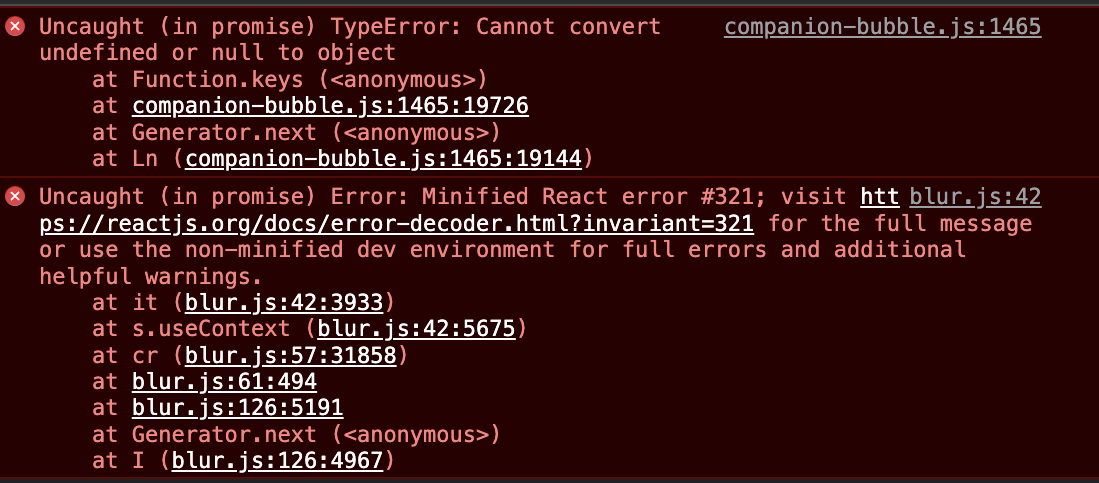
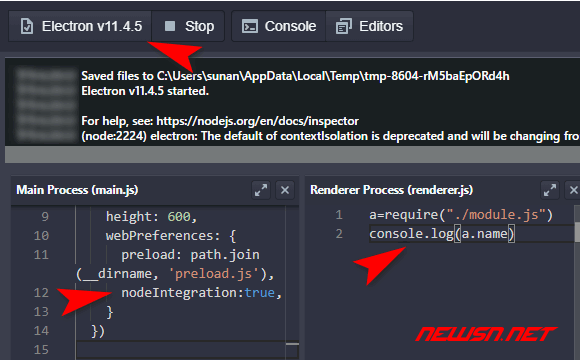
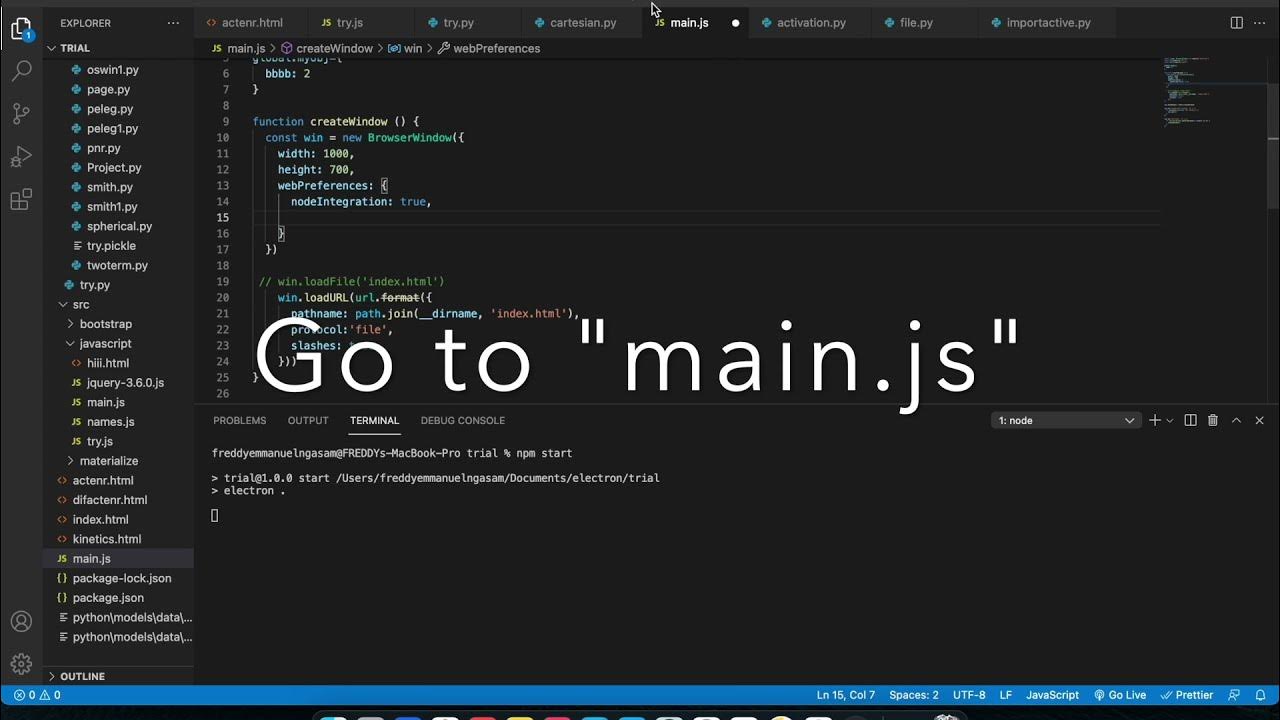










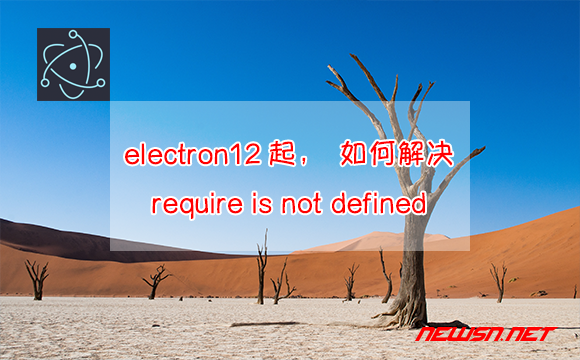










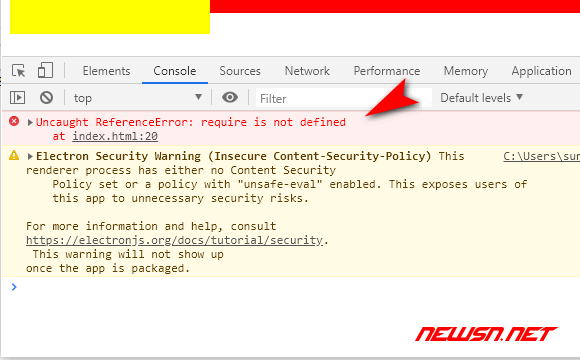
![node.js] require is not defined in typescript Node.Js] Require Is Not Defined In Typescript](https://img1.daumcdn.net/thumb/C176x176/?fname=https://t1.daumcdn.net/cfile/tistory/224884335588B2D13F)



Article link: require is not defined.
Learn more about the topic require is not defined.
- How to Fix ReferenceError: Require is Not Defined in JavaScript
- Browser: Uncaught ReferenceError: require is not defined
- How to fix “require is not defined” in JavaScript / Node.js?
- ReferenceError: require is not defined in JavaScript – Stack Diary
- ReferenceError: require is not defined in JavaScript [Fixed]
- ReferenceError: require is not defined in JavaScript – Stack Diary
- How to fix “require is not defined” in JavaScript / Node.js?
- vite uncaught referenceerror: require is not defined – AI Search Based Chat
- RequireJS – Quick Guide – Tutorialspoint
- JavaScript fix ReferenceError: require is not defined – sebhastian
- Fix “require is not defined” in JavaScript/Node – Stack Abuse
- How To Fix ReferenceError require is not defined in JavaScript
- How to fix require is not defined in JS – Weekend Projects
- How to fix the error `require is not defined` in Node.js
See more: https://nhanvietluanvan.com/luat-hoc